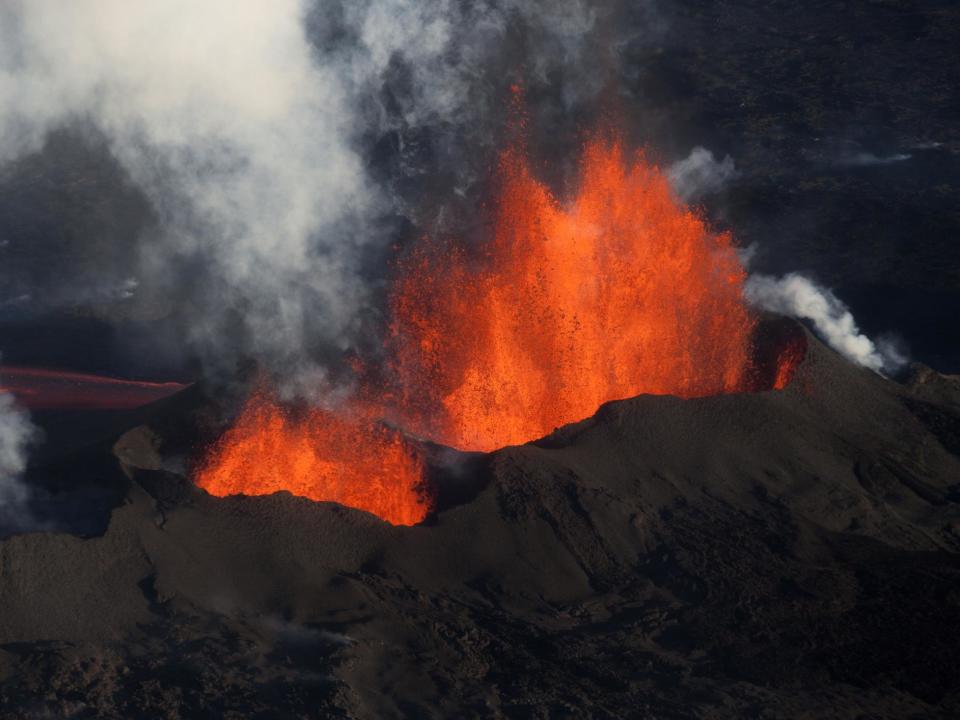Massive volcanic event may have turned Earth into ‘giant snowball’, scientists say
Ancient volcanoes may have triggered a period in Earth’s history when temperatures plummeted and the planet turned into a “giant snowball”, according to scientists.
Remains of lava flows unearthed in Mexico revealed previously unknown volcano activity that appears to have played a role in massive fluctuations in global temperature.
The discovery of these 600 million year old rocks helps explain a period of the planet’s history when its surface froze and became covered in glaciers.
Volcanoes are a critical component in the systems that keep the Earth’s temperature swinging between periods of heat and cold over millions of years.
Mass eruptions belch out huge quantities of CO2 into the atmosphere, causing short-term global warming by the same mechanism as greenhouse gas emissions from human sources.
However, this effect is then balanced out as the rocks that form from cooling lava break down, and the minerals within them react with CO2.
While the weathering process of rocks takes millions of years, it effectively locks the greenhouse gas out of the atmosphere and makes temperatures dip.
“That guarantees long-term stability of Earth’s temperate surface conditions in comparison to the hostile environment of its cosmic neighbours, hot Venus and cold Mars,” said Professor Axel Schmitt of Heidelberg University.
Professor Schmitt said a disturbance in the equilibrium between the two processes has taken place at various points in Earth’s history causing it to resemble “a snowball” from space.
“Over timescales of millions to tens of millions of years, the weathered rocks can sequester sufficient CO2 to plunge Earth’s climate into an extreme ice age,” he said.
After studying sheets of Mexican rock that are the only remnants of long-eroded lava flows in the region, Professor Schmitt and his colleagues found they were identical to other rocks found in Canada and Norway.
Dating of rare minerals found in the rock revealed the sheets were the same age as those found whole continents away.
The discovery of such an enormous stretch of ancient lava flow suggests this could have been the trigger for temperatures plummeting around 40 million years later in an event known as the Gaskiers glaciation.
The new findings were published in the journal Geophysical Research Letters.
While the ability of some minerals to absorb CO2 and cool global temperatures is well established, harnessing this to tackle climate change has limited potential due to the long timescale it operates on.
However, there have been some efforts by scientists to speed up the process in order to suck some of the climate-warming gas from the atmosphere.

 Yahoo News
Yahoo News 

